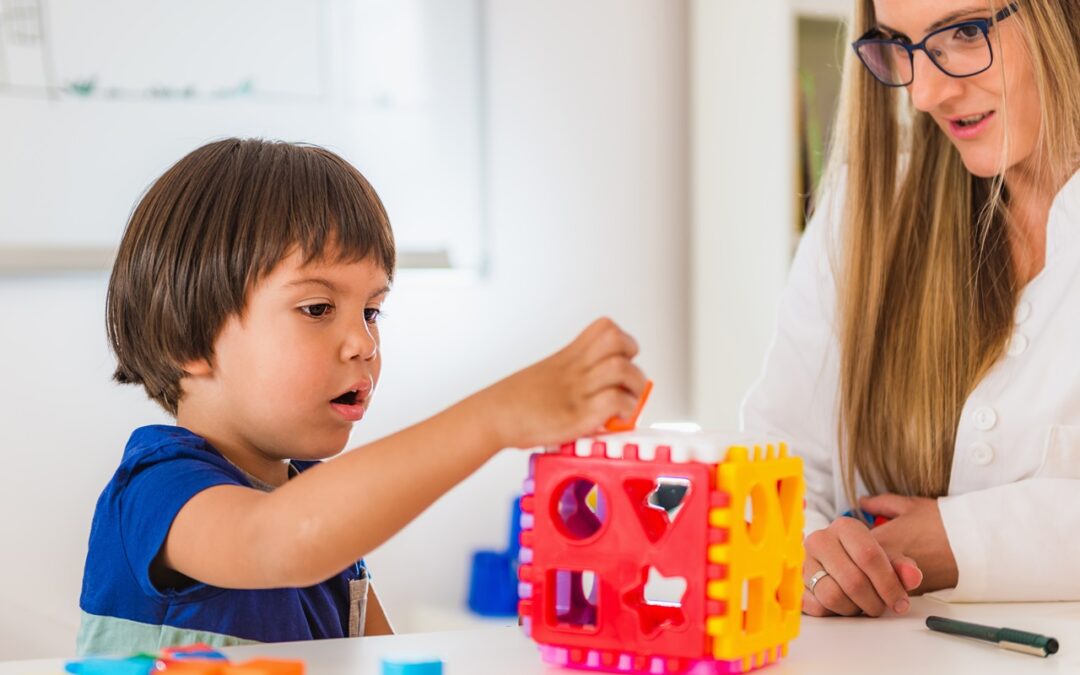When we talk about the treatment and support of autism through Applied Behavior Analysis (ABA), consistency emerges as a cornerstone of effective therapy. In ABA therapy, the repetitive and structured application of teaching techniques enhances learning and behavior modification. This consistent approach helps children with autism to understand and adapt to their environments more effectively.
From our experience, maintaining a consistent therapy environment is not just about repeating the same actions; it’s about creating a reliable setting where children can thrive. The predictability of a routine can significantly reduce anxiety and confusion among children with autism, giving them a safe space to learn and grow. This concept of consistency goes beyond the individual sessions—extending into the daily lives of these children, which is crucial for their progress and development in real-world scenarios.
In the following sections, we’ll delve deeper into the nuances of consistency in ABA therapy. We’ll explore its benefits, discuss how we can sustain it across all therapy sessions, and provide practical advice for families to support consistency at home. Understanding and implementing these practices correctly plays a critical role in empowering children with autism to reach their fullest potential.
Understanding Consistency in ABA Therapy
Consistency in Applied Behavior Analysis (ABA) therapy refers not just to the uniformity of the environment or the schedule, but also to the application of behavioral principles and techniques. Here, we carefully design interventions based on repeated, predictable patterns that align with each child’s learning abilities and needs. The benefits of this structured approach are profound, particularly for children with autism, who may struggle with unexpected changes or unfamiliar scenarios.
For instance, when we introduce a new skill, we apply consistent prompts and reinforcements—this helps the child to recognize and adapt to what they’re learning without the confusion of differing approaches. Consistency in the timing of sessions, the language used during therapy, and the responses to specific behaviors are all critical. Each of these elements builds upon the last, creating a learning experience that is cumulative and reinforcing, rather than fragmented and confusing. The result is a learning process that is more intuitive for the child, making the acquisition of new skills more attainable.
Key Benefits of Consistent Routines for Children with Autism
The introduction of consistent routines within ABA therapy sessions benefits children with autism in multiple, significant ways. Firstly, these routines promote predictability, which is fundamental in reducing anxiety and stress. Many children with autism find unexpected changes distressing, so the predictability of a consistent routine provides a comforting structure. Here are the primary benefits that consistency brings:
- Increased Feelings of Safety and Security: When children know what to expect during their day, including therapy sessions, they feel safer and more secure. This emotional stability is crucial for their overall well-being and enhances their capacity to focus during therapy sessions.
- Improved Learning Outcomes: As skills are taught consistently, children have a better chance to understand, learn, and retain new information. The repeated and predictable nature of instructions and reinforcements helps solidify learning.
- Enhanced Generalization of Skills: Consistent routines help children apply learned skills beyond the therapy session into their daily lives. For instance, the consistent use of language or behavior cues during sessions can help a child apply these in various settings, whether it’s at home or in school.
- Better Behavioral Management: Consistency helps in managing behaviors more effectively. When children understand the consistent consequences of actions, whether positive or negative, they are more likely to adapt their behavior in a positive direction.
By fostering predictable and secure environments, we not only aid their learning process but also support their emotional and behavioral growth, proving why consistency is so foundational in ABA therapy.
Strategies to Maintain Consistency in ABA Sessions
Maintaining consistency in ABA therapy sessions is essential for effective learning and development. We have implemented several strategies to ensure that each session is as consistent as possible, which in turn helps to maximize the therapeutic impact for children with autism. First, we use standardized protocols for all interactions. This means every therapy session follows a set routine and structure, from the warm-up activities to the concluding part. By doing this, children know what to expect and can settle into the learning environment more quickly.
Furthermore, we emphasize the importance of a consistent team. The same therapists are paired with each child as much as possible to ensure continuity in the therapy process. This not only helps in building a strong, trusting relationship between the therapist and the child but also maintains a stable environment where the therapist is deeply familiar with the child’s specific needs, behaviors, and progress.
Supporting Consistency at Home: Tips for Families
Encouraging consistency at home is another way to strengthen the learning that takes place during therapy sessions. Here are some practical tips that families can follow to create a supportive environment:
- Establish Predictable Routines: Try to have fixed times for activities such as meals, homework, play, and bedtime. The predictability of these routines helps create a stable environment for children.
- Use Visual Schedules: Visual schedules that outline the day’s activities can be incredibly helpful. They assist children in understanding what comes next, thereby reducing anxiety and improving cooperation.
- Continue the Use of Behavioral Techniques: Apply the same behavioral techniques used in therapy sessions at home. Consistency in behavior management strategies helps reinforce learning and adaptation of behaviors across different settings.
- Provide Consistent Responses: Ensure that all family members respond in a similar manner to behaviors, using the techniques advised by the therapists. This uniformity in responses reinforces learning and behavior modification efforts.
Final Thoughts
At Strive ABA Consultants, we understand the profound impact consistency has on therapy outcomes for children with autism. By implementing structured, predictable routines and strategies both in therapy and at home, we enhance the therapeutic experiences and overall development of these children. The journey with autism is a complex one, but with consistency, it can be made smoother and more effective, helping each child reach their full potential.
If you’re looking for support or more information on how we can help through consistent and comprehensive ABA therapy strategies, don’t hesitate to contact us at Strive ABA Consultants. We are committed to being a catalyst for change and supporting every child’s growth and development in a consistent, nurturing environment.
Contact us today, and together, let’s strive for success in every therapy session.


